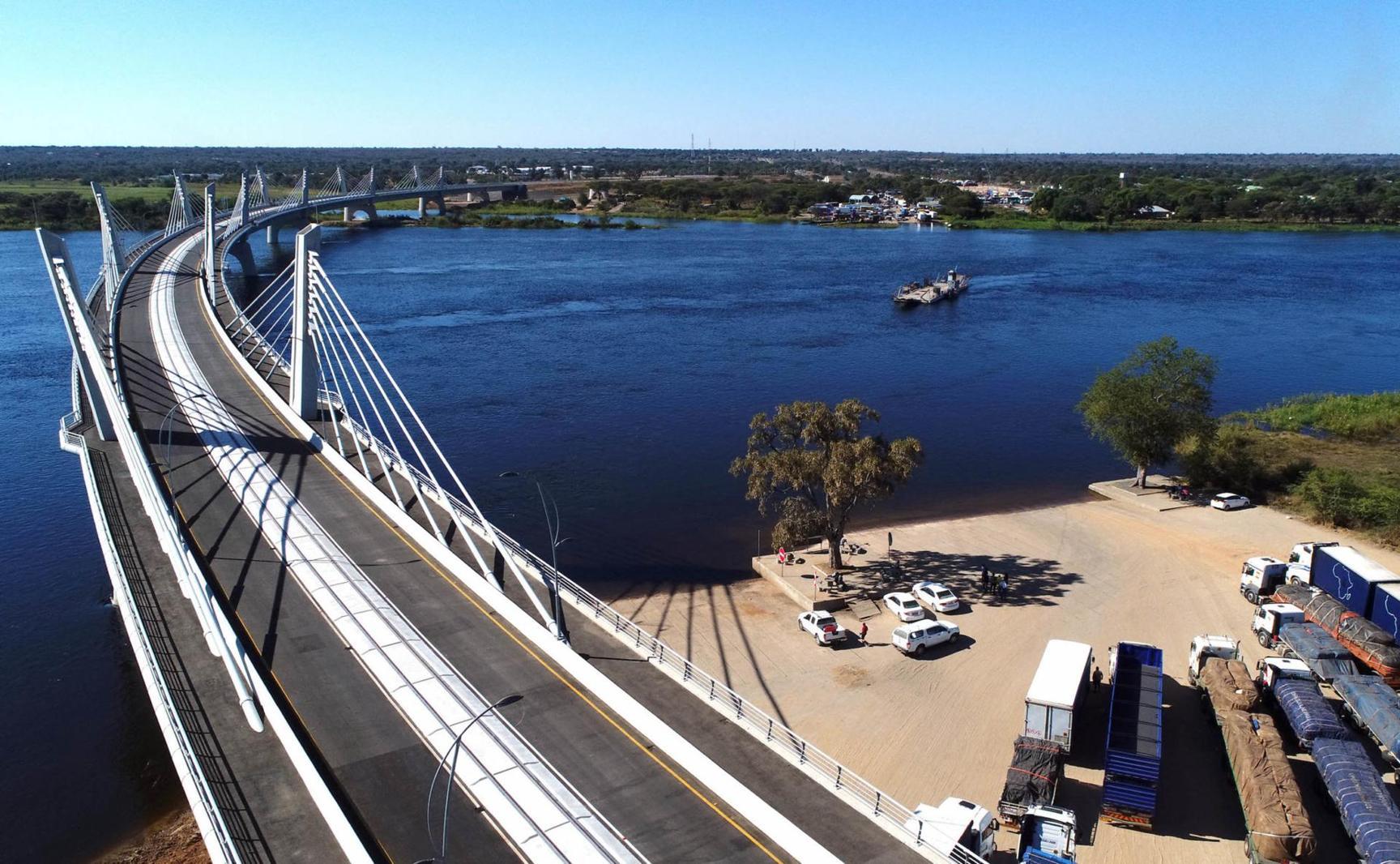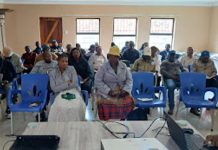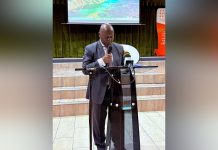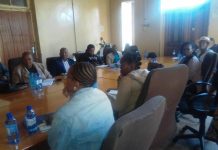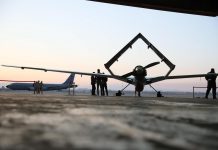By Kefuoe Phate
Africa-Press – Lesotho. Roads that build more than trade, at dawn, heavy trucks line the Kazungula Bridge, where Botswana and Zambia meet across the Zambezi River. As the sun rises over its steel arches, drivers from across Southern Africa prepare for long hauls that link ports, cities, and people.
This bridge is more than an engineering feat, it is a symbol of progress and partnership. It represents how roads, rails, and power lines are breaking barriers and knitting together economies across the Southern African Development Community (SADC).
In a region of vast distances and rich resources, infrastructure is not just about movement, it is about integration, opportunity, and growth.
Infrastructure, the foundation of regional integration, which is at the heart of SADC’s vision, to transform its 16 member states into a single, competitive, and industrialised market. Yet such ambition depends on a single condition: connectivity.
Without roads, ports, electricity, and digital networks, the promise of shared prosperity remains out of reach. Infrastructure is what makes trade possible, allows industries to expand, and brings rural communities into the economic fold.
According to the SADC Industrialisation Strategy and Roadmap (2015–2063), infrastructure development is one of the three pillars of regional integration, alongside industrialisation and competitiveness. It underpins every sector, from agriculture and mining to tourism and digital services.
Dr. Pauline Nyirenda, a Regional Development Economist, puts it succinctly, “Integration begins when goods, people, and ideas can move freely. Infrastructure is the engine that drives that freedom.”
From Isolation to Integration: Connecting a Region, for decades, poor infrastructure has hampered trade within Southern Africa. Border delays, congested ports, unreliable electricity, and long transport routes increased costs and limited competitiveness.
Today, that narrative is changing. The region is building bridges, expanding roads, and investing in renewable energy, creating corridors of growth that unite nations.
The Kazungula Bridge, a joint project between Botswana and Zambia, is one such example. Opened in 2021, the 923-meter bridge has dramatically cut transit times and improved access along the North–South Corridor, which connects Durban in South Africa to the Democratic Republic of Congo. The bridge is now a critical gateway for goods moving across the region.
In the east, Mozambique’s Maputo Development Corridor, co-developed with South Africa, has revitalised trade and industrialisation. It has attracted investment, created jobs, and opened new markets for landlocked neighbours such as Eswatini and Zimbabwe.
Such projects embody SADC’s integration model, joint investment, shared benefits, and inclusive growth.
Lesotho: a small country, but big contribution, while Lesotho may not boast vast highways or ports, it holds a powerful example of cross-border infrastructure cooperation, the Lesotho Highlands Water Project (LHWP).
The project channels water from Lesotho’s mountains to South Africa’s industrial heartland while generating hydropower for domestic use. It stands as one of Africa’s most successful transboundary infrastructure initiatives.
“The LHWP is more than a water project,” says Engineer Mokoena Matete of the Lesotho Highlands Development Authority (LHDA), “It is a partnership that has built trust between nations and demonstrated how shared resources can yield shared prosperity.”
The project has provided Lesotho with critical revenue, improved local roads and livelihoods, and strengthened relations with South Africa, a model of how infrastructure fosters both economic and political integration.
Powering Progress: Energy as the Lifeblood of Growth, energy infrastructure is another cornerstone of regional cooperation. Without reliable electricity, industries cannot thrive, and communities remain trapped in poverty.
To address this, SADC countries have established the Southern African Power Pool (SAPP), one of the world’s most successful examples of regional energy integration. Through the SAPP, member states share electricity across borders, ensuring that countries with surplus power can support those facing shortages.
Hydropower from Mozambique and Zambia, solar from Namibia, and wind energy from South Africa are increasingly being traded through a connected regional grid.
This cooperation not only reduces costs but also strengthens energy security and sustainability.
For Lesotho and Eswatini, it means access to clean and reliable power that supports businesses, schools, and hospitals.
“Energy integration is transforming the region’s potential into performance,” says Tebogo Ncube, Director of SADC’s Energy Division. “It proves that when we share infrastructure, we multiply development.”
Corridors of Growth: Roads and Railways That Unite, across Southern Africa, new and upgraded transport corridors are linking production zones with ports and markets. These include the Walvis Bay Corridor connecting Namibia with Botswana, Zambia, and the DRC.
The Beira and Nacala Corridors in Mozambique, giving Malawi and Zimbabwe access to the Indian Ocean.
The North–South Corridor, the region’s main trade artery, connecting seven countries from the Cape to Congo.
These corridors have reduced transport times, stimulated industrial clusters, and boosted intra-regional trade. The African Development Bank estimates that improving logistics efficiency along these routes could increase regional GDP by 3–5% annually.
For small and medium enterprises, better infrastructure means access to broader markets and reduced costs, the foundation of inclusive growth.
The Digital Revolution: Linking the Future, beyond roads and bridges, digital connectivity is becoming the new infrastructure of integration. The COVID-19 pandemic underscored the importance of reliable internet access for business, education, and governance.
Through the SADC Digital Transformation Strategy (2021–2030), member states are harmonizing digital policies, expanding fibre optic networks, and promoting e-commerce across borders.
Lesotho, for example, has seen a rise in youth-led tech startups using regional online platforms to sell crafts, clothing, and software services. These entrepreneurs are part of a new generation that sees borders not as barriers but as gateways.
Digital infrastructure is ensuring that even landlocked or remote communities can participate in the regional economy, a powerful driver of equality and innovation.
Infrastructure and Economic Growth, a Powerful Connection, the link between infrastructure and economic growth in the SADC region is undeniable. Efficient transport systems reduce trade costs, reliable energy powers industries, and digital networks foster innovation.
According to the SADC Regional Infrastructure Development Master Plan, every dollar invested in infrastructure yields multiple returns, from job creation to higher productivity.
Improved corridors have already boosted intra-SADC trade, which now accounts for roughly 20% of total exports, up from just 9% a decade ago. Investments in energy, water, and transport are estimated to add two to three percentage points to regional GDP growth annually.
Moreover, regional infrastructure attracts foreign direct investment, stimulates tourism, and enhances food security by linking farmers to markets.
As Dr. Nyirenda observes, “infrastructure doesn’t just move goods, it moves hope, jobs, and opportunity.”
Challenges on the Road Ahead, despite these achievements, challenges persist. The SADC region faces an infrastructure financing gap estimated at over US$500 billion (over M8 trillion) by 2040. Many projects remain underfunded or delayed due to limited resources and complex approval processes.
Maintenance is another hurdle, roads are deteriorating, Lesotho, through the Ministry of Transport and Public Works, is currently implementing a nationwide programme to construct new roads and rehabilitate existing ones as part of its broader infrastructure development strategy. This initiative aims to improve connectivity between rural and urban areas, facilitate trade and tourism, and ultimately boost economic activities both locally and internationally.
Climate change adds further strain, floods, droughts, and heatwaves threaten existing infrastructure, highlighting the need for resilient and green solutions.
To address these, the SADC Project Preparation and Development Facility (PPDF) helps member states design bankable projects, while the SADC Regional Development Fund mobilises financing from both public and private sectors.
Regional Unity through Shared Infrastructure, infrastructure does more than support economies; it builds solidarity. Every joint project, whether a bridge, a dam, or a power line, represents cooperation and shared destiny.
The Kazungula Bridge united Botswana and Zambia. The Lesotho Highlands Water Project bonded Lesotho and South Africa. The SAPP grid links all member states in mutual dependence.
These are not just structures of steel and concrete; they are monuments to regional unity. They remind southern Africa that progress is strongest when nations work together.
Integration through infrastructure also reduces conflict over resources, encourages cross-border investment, and promotes regional stability, all essential ingredients for lasting peace and prosperity.
Building the Future: Sustainable, Inclusive, and Green, the next chapter for SADC lies in building infrastructure that is sustainable, inclusive, and future-oriented. Green energy, climate-resilient transport, and digital innovation must define the region’s next generation of projects.
Public-private partnerships will be key, as will youth engagement and women’s participation in infrastructure planning and management.
“The roads and grids we build today must serve generations to come,” notes Engineer Matete. “Integration is not a moment; it is a movement.”
By aligning national priorities with regional goals, SADC can continue turning vision into reality, one project at a time.
One Region, One Road to Prosperity, as the trucks cross Kazungula and water flows from Lesotho’s highlands to South Africa’s plains, a new story of Southern Africa is being written, one of connection, cooperation, and shared ambition.
Infrastructure is no longer just about physical structures, it is the bridge between nations, the engine of growth, and the symbol of unity.
Through regional corridors, shared power grids, and joint water projects, SADC is proving that integration is not just policy, it is progress.
The road to prosperity runs across the highways we build, the rivers we share, and the partnerships we strengthen. In every kilometre of road, in every megawatt of power, in every drop of shared water lies a single message:
‘’Together, we grow. Together, we rise. Together, we build the SADC of tomorrow.’’
Source: Lesotho News Agency
For More News And Analysis About Lesotho Follow Africa-Press

